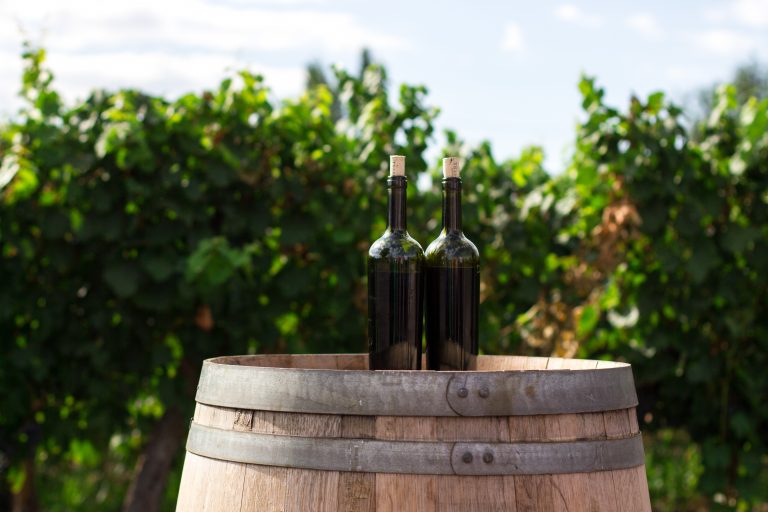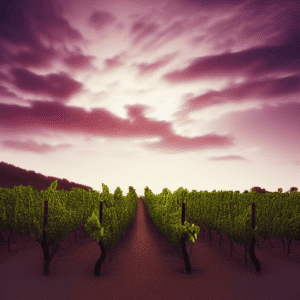Wine Tasting – 21 Tips for Visiting Wineries

How to Taste Wine Like A Pro
If you’re like most wine lovers, the thought of visiting wine country and touring vineyards is a dream come true. But the process can seem daunting if you’ve never been to a winery. What should you wear? What should you bring? How do you taste wine? Don’t worry – we’re here to help!
This blog post will give tips for visiting producers and tasting wine like a pro. Most importantly, it will discuss wine flights and how to tackle them.
Why Taste Wine?
Wine-tasting flights can also be a great way for wine enthusiasts to learn about wine’s different flavors and subtleties. In addition, every wine variety from other regions worldwide offers different expressions in terms of aromas and taste.
By trying a few different wine types at once, people can explore the other flavor profiles of wines worldwide. This helps enthusiasts learn about the various types of grapes that make wine. The variety of wines is endless; every wine glass is unique!
Wine tasting is a great way to expand your wine knowledge and palate! In addition, wine companies around the country often offer wine flights to educate people about their products and wine.
Different wine regions are known for multiple wines; winemakers love to display theirs, particularly when compared with similar examples. In addition, winemakers love to pop open more than a few bottles to swoon their potential customers. So try a wine flight on a menu next time you see it! You might find your new favorite wine.
What is Wine Tasting?
Wine tasting is examining wine by its looks, smell, and taste. There are two ways of doing this: you can taste wines blind or non-blind. There are two main objectives in sampling wine. First, examine its appearance, aroma, taste, and texture to understand how it was made and learn more about yourself and your preferences. Do you like red wines, white wines, or sweet wines? Old-world wines or new-world wines?
Wine tastings occur in wine cellars, in wine bars, or at tasting events and can be orchestrated by the producers in a cellar. Tastings can also be done at home in a more relaxed atmosphere. Putting together sampling flights with different wine regions is easier than you think.
How to Choose a Winery to Visit?
If you’re visiting wine country, you’ll undoubtedly encounter multiple wines. Many wines mean there’s an opportunity for comparative tasting. Make sure you choose producers that offer new wines compared to what you’re used to—they should also provide tasting flights or wine flights. Don’t stick to the same wine; try different wines!
What to Look for in a Winery?
Visiting producers is an excellent way of tasting your favorite wines right there, where they were born. Still, choosing the right winery can be challenging.
If you live close to a wine region, your best bet is to visit your local makers and get to know them intimately. There’s no better wine than the one made close to home. Still, not everyone lives close to a region. Where should you go?
Best Road Trips to Visit Wineries
If you live in the US, plan your next vinous adventure to California — the Golden State produces 80% of the country’s wine, and there’s a style and grape for every palate.
Oregon, Washington, and New York State are also beautiful destinations for wine lovers. Each region has particular types of grapes; they’re all lovely to explore.
Where to Visit Wineries Abroad?
If you can travel the world searching for your next favorite wine, a tour through Europe will undoubtedly open your eyes. Spain is known for its rustic reds made with Tempranillo, France offers the ultimate expression of your favorite grapes, and Italy has more than great wine—the food is fantastic!
Of course, the New World has vineyards of its own. Argentina has endless fields planted with Malbec, while South Africa and Australia champion Pinotage and Shiraz. Touring foreign lands to enjoy fermented grape juice will surely change you.
Wine is fantastic everywhere and always tastes better in the cellars where it is made. Wine is about enjoyment; you don’t have to travel far to share a glass with your loved ones.
How to Taste Wine:
The basics of wine are easy enough to learn. Swirl the wine around your glass, inhale its bouquet, sip, and savor. Wine tasting examines wine through smell, taste, and texture.
The two main ways to do this are blind or non-blind events. Have a few bottles of wine from different regions, taste them, and write down your tasting notes.
Besides determining if you like a particular wine over the other, you can learn how to differentiate different wines through comparative tasting.
The objective is to identify wine characteristics and make assumptions about the wine’s style, grape variety, region of origin, and vintage. For example, Napa Valley unoaked chardonnay tastes different than a Pinot Grigio, so taste them side by side in a varietal wine flight.
When drinking wine, you should also consider its food pairings. Like any cuisine, wine has different flavors that can be enhanced or masked when paired with certain foods. For example, a fruity and light wine might be a good pairing for spicy dishes, while a wine with strong, earthy flavors can be paired with dishes with more decadent, heavier flavors.
Old-world wines are earthier and less fruit-forward, while new-world wines, for example, those from Napa Valley, are bold and all about the fruit.
Wine Flights, What Are They?
We call wine flights a series of different wines served side by side. Some can be new wines, and others can be old wines. You can taste aged wine to learn to distinguish oak aging or several wines from diverse regions or the same winery. Tasting multiple wines makes wine flights fun, and there are endless wine flight ideas — every wine glass offers a different experience, especially in a blind-tasting setting. That’s where a wine flight comes in.
Some of our favorite wine flight ideas involve comparing styles made with the same grape but grown in different countries. Other fun ideas involve tasting the exact wine from different vintages. How’s that for an enjoyable wine flight?
What does a wine flight mean for a sommelier?
Tasting takes on a new meaning for a sommelier or a wine professional in the restaurant business. The aim is to offer guests wine-pairing ideas and help them find a bottle they’ll enjoy. Some people like wine with red fruits on the nose, and others like crisp, cold-climate wines.
Some folks love those warm vanilla flavors, and others rejoice in the subtle differences you can expect from multiple wines at different prices. The sommelier’s job is to find the perfect wine for every guest, which means sourcing labels worldwide.
What are the Types of Wine Flights?
A flight is used for wine-tasting scenarios where the wine glasses are less than half full. Wine flights refer to a special tasting of three or more similar wines, often with related themes for wine experts and companies. In addition, a wine flight educates wine enthusiasts and their taste buds about the subtlest hints of wine.
How can I organize a wine-tasting flight?
Throwing wine flight events at home can be an excellent way to socialize and enjoy a fun way to learn about your favorite beverages. But, of course, everything begins with an overview of wine.
Virtual wine tours are a great way to get started. Each professional winemaker and sommelier has decades of wine knowledge and experience selecting food and wine pairings and preparing the wine during the tastings. The guide covers how to design the flight you want.
Use Tasting Mats
Tasting mats or templates have several options, but you can make your own. In this case, include a place for people to take notes, including space for visual inspection of the variety tasted, the specific region, the aromas, and the sweetness of the wines. You can add many factors to a wine-tasting mat to evaluate the wine glass’s different aspects. Do the same for every flight.
Wine Flight Ideas
Here are a few ideas for putting together a flight that will not only entertain your guests but also help them learn something new! You need not splurge to organize a tasting party; talk to your local wine vendor and get classic examples of grapes and regions. Most of the time, the most typical wines for any style are very well-priced.
Sparkling wine flight
The two most notable sparkling wines worldwide are Champagne and Prosecco. One wine is from France, and the other is from Italy.
These two sparkling wines are more different than you think when tasted. They’re made in different countries and with different grapes and methods. Every other sparkling wine, a long list within the variety of wines, is inspired by one of these two wine styles.
Tasting Champagne against Prosecco in a flight and learning the aroma differences between these iconic sparkling wines can make you a better wine buyer and host.
Unoaked vs. Oaked Chardonnay
Chardonnay is a noble varietal that grows in every wine-producing country worldwide. Chardonnay produces the most intensely flavorful and bolder white wines, but two major Chardonnay styles are oaked and unoaked. Unoaked chardonnay is a relatively light body beverage with crisper acidity!
By tasting oak and unoaked white wine versions of the versatile white wine, you can learn to distinguish oak influence in white wines, which will most definitely come in handy.
Pinot Noir Wine flight
Pinot Noir is a delicate red grape that thrives in cold climates like Coastal California, Oregon, and Burgundy in France, among others. Its ability to reflect its terroir, or where the grapes were grown, makes it unique. This appeals to wine lovers, as discerning between a French and a sweet-scented Californian Pinot Noir is fun and valuable.
Merlot vs Cabernet Sauvignon
Merlot and Cabernet Sauvignon are the two most planted red varietals, and they’re both best-sellers. They couldn’t be any more different, though. Cabernet is bold, structured, and age-worthy, and Merlot is gentle, round, and fruit-forward.
There’s a reason winemakers often blend Cabernet and Merlot for Bordeaux blends — they complement each other. Well, learning about them on a wine flight is a great idea. You might prefer one, but you don’t have to choose!
Tannins in red wine from light to bold
Learn about tannins influencing the texture of red wines. Recent reports show that tannins have many health benefits. Tannins in red wines evoke mouth-tingling sensations and a drying feeling on the palate.
Well, tannins help the red wine age and make red wine compatible with fatty food like steaks. So, taste a tannic red wine against a softer one and train your palate to assess the wine’s tannic levels.
Sauvignon Blanc and Pinot Gris Wine Flight
Taste two of the most popular white grapes and discover their subtle differences and similarities. Wines made with these two grapes are always thirst-quenching and delicious, but they’re unique—find out through a wine flight!
Are You Ready to Taste Wine Like A Pro?
Now that you know the basics of tasting, how to taste wine during a wine flight, and how to assemble your wine flights, let’s get tasting!
Most importantly, tasting helps you get to know yourself better. For example, you’ll see if you like blackberry notes in your wine or sweet wine over dry examples. That’s the beauty of it. Fermented grapes take you places, and in the process, you get to know yourself better.


![What is Trento DOC Sparkling Wine? [WSET2 Reviewed]](https://grapeandbarrel.com/wp-content/uploads/2024/04/0oflrry-rim1712673478-768x432.jpg)


![What Role Does Acidity Play in Wine Quality? | [WSET4]](https://grapeandbarrel.com/wp-content/uploads/2024/04/963816d0-c0a0-4b5b-9621-2a00f01c7e5d-768x439.png)

